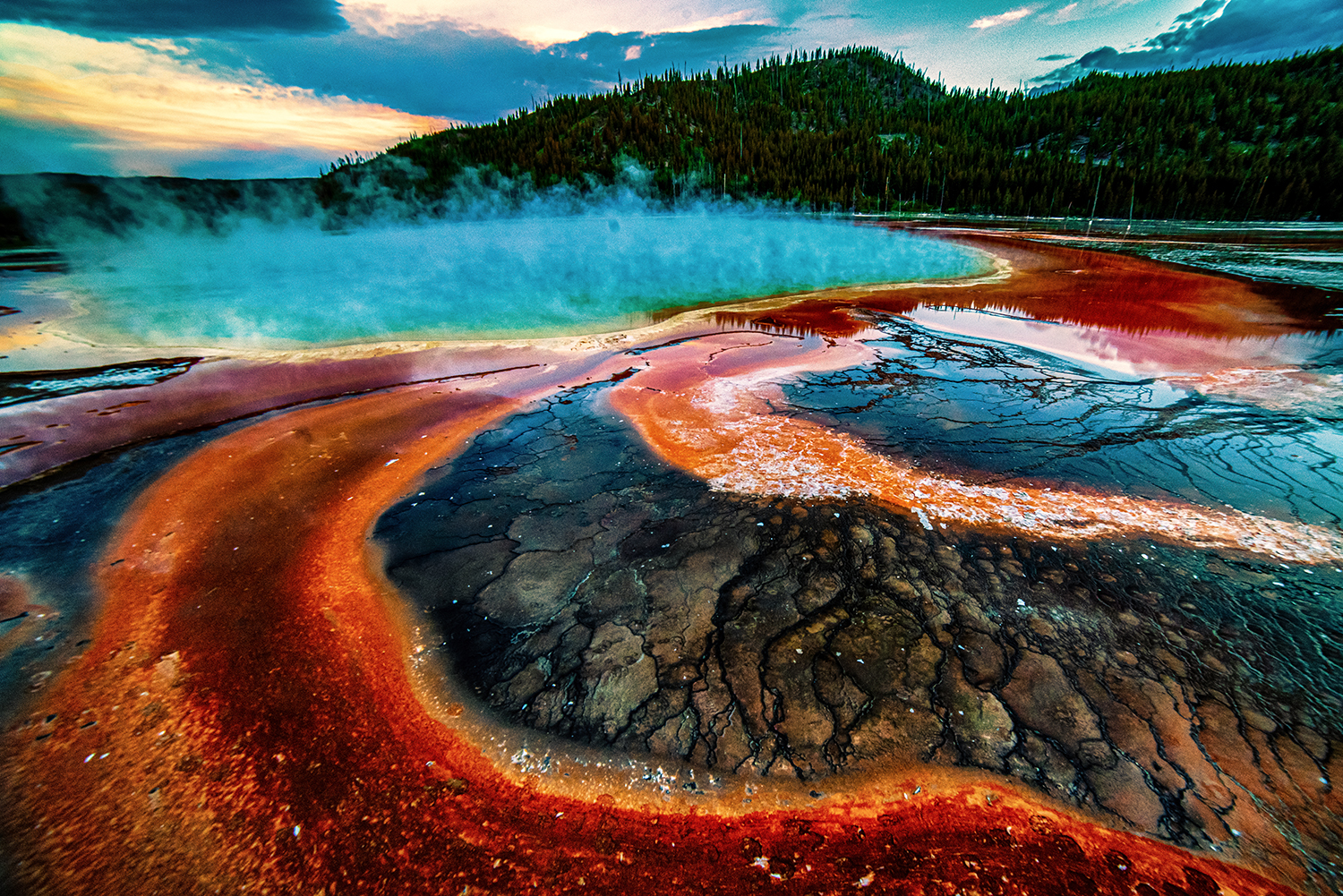
Yellowstone National Park, in addition to being one of the most beautiful landscapes in the United States, is nestled within the caldera of an enormous supervolcano that catastrophically erupts every few hundred thousand years. The last major eruption, some 600,000 years ago, was a thousand times larger than the eruption of Mount St. Helens in 1980. If such an eruption were to occur today, the effects would be potentially civilization-ending: enough dust and ash might be ejected into the atmosphere to cause years of crop failures, subjecting billions to deaths by starvation.
There may be a way to address this risk. The Yellowstone supervolcano is fed by huge magma chambers, large masses of hot liquid and semi-liquid rock several miles below the surface. These magma chambers are being heated by the Yellowstone hotspot, an upwelling of the earth’s molten mantle, and slowly growing over time. If you could bleed off heat from the magma chambers faster than the hotspot was heating them, the chambers would cool and eventually solidify, preventing an eruption. As a bonus, the heat extracted could be used to generate electricity with a geothermal power plant. Depending on how fast heat was extracted, this could theoretically produce a very large amount of electricity, perhaps enough to power the entire country.
A 2015 paper from NASA’s Jet Propulsion Laboratory looks at the possibility of extracting this heat. It suggests building a “ring” of 160 geothermal power stations around the outside of the caldera. Each power station would drill a pair of wells far enough down to be near, but not in, a magma chamber. Water would be injected down one well, heated by the hot ground below, and then brought back up the other well to drive the power plant.
As heat is extracted from the magma chamber, the rock would gradually cool and solidify, requiring a new, smaller ring of power stations to be built about every fifty years or so. This arrangement would generate a modest amount of electricity — 3.5 gigawatts, about as much as the U.S.’s largest nuclear power station — and would take about 50,000 years to cool the magma chamber completely. But this could be greatly accelerated if more, larger power stations were built.
Such a project would reduce existential risk while generating large amounts of electricity in the process. But it would be immensely challenging to build. Not only are there numerous technical challenges to overcome, but there is an environmental law that specifically prevents exploiting Yellowstone’s geothermal resources. A Yellowstone geothermal power station would thus be the ultimate challenge for the YIMBY movement.